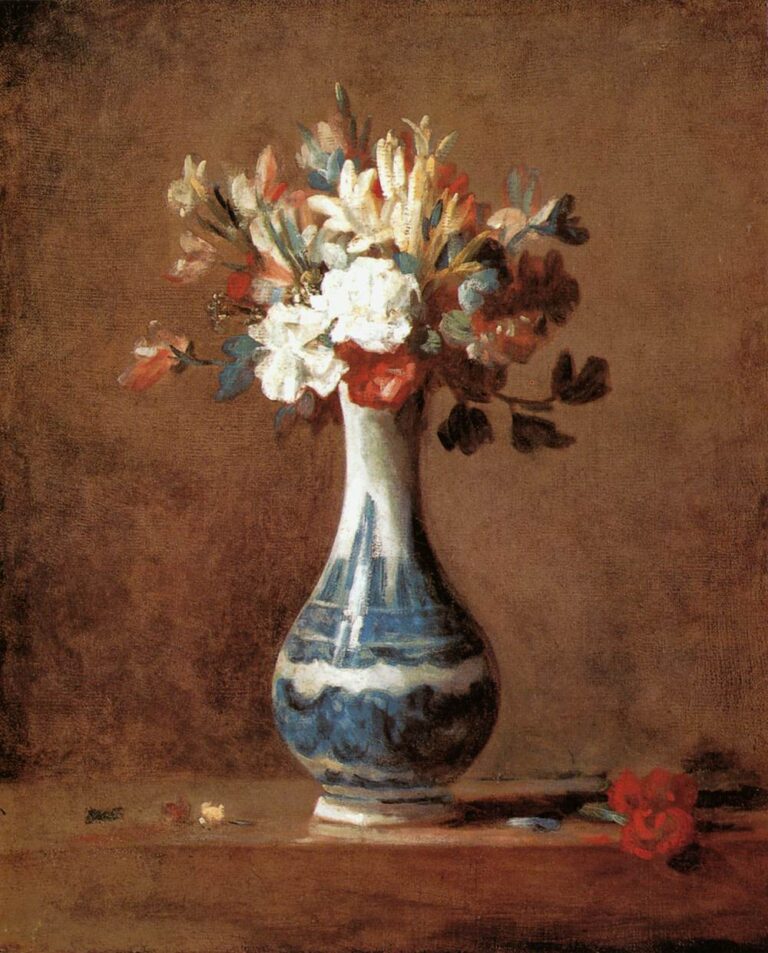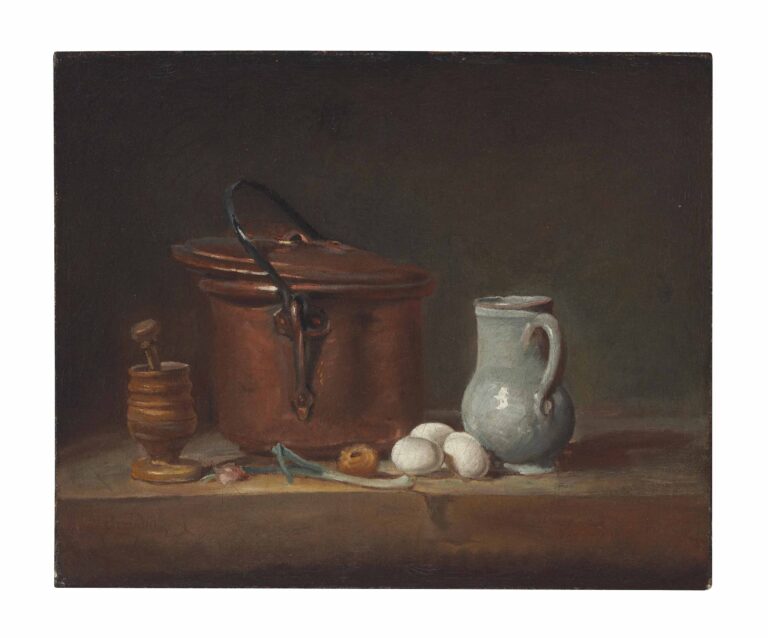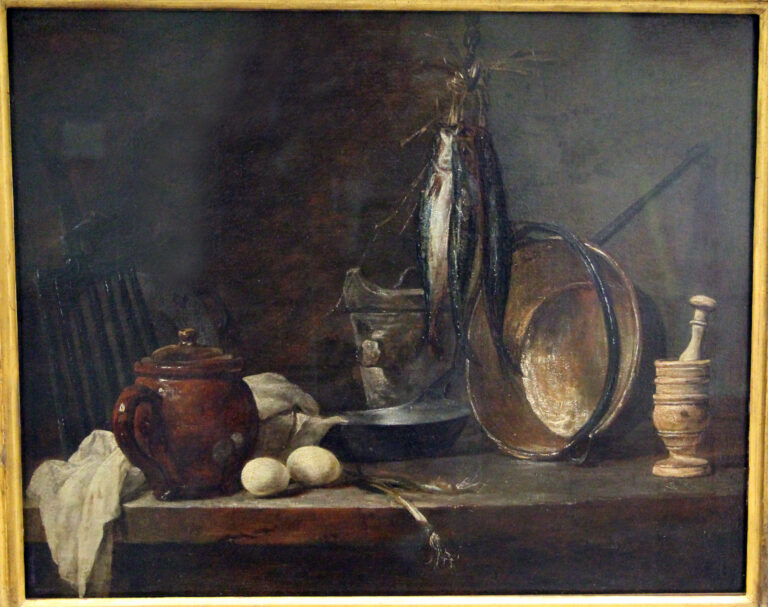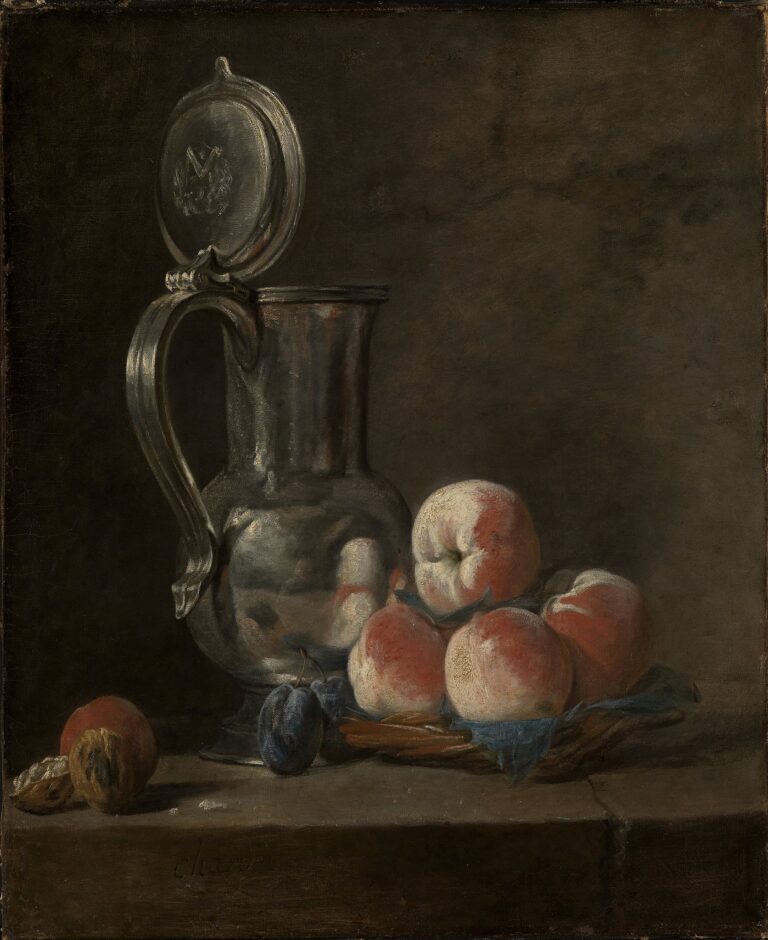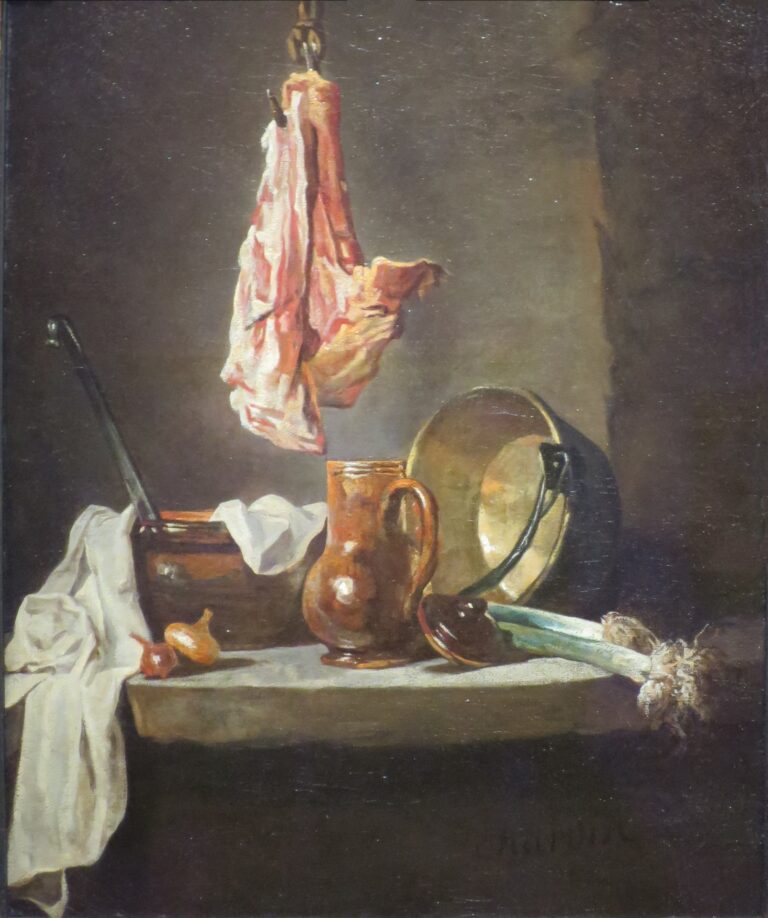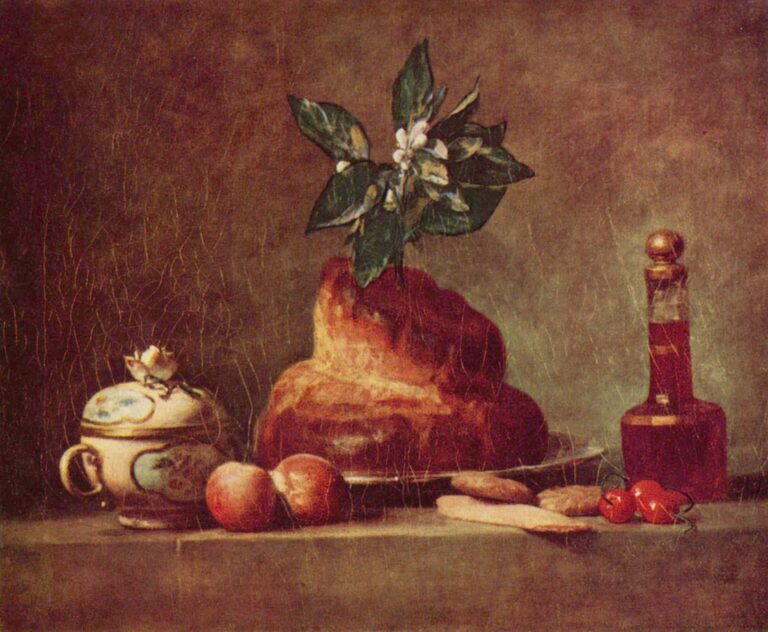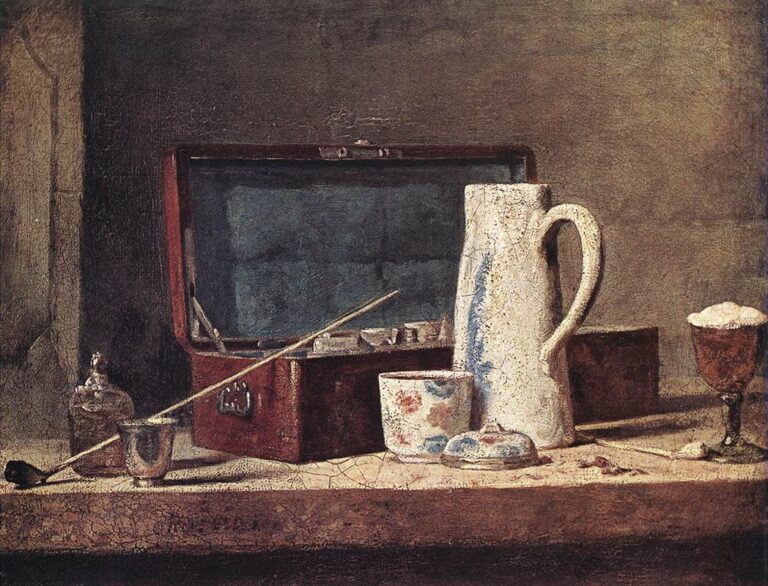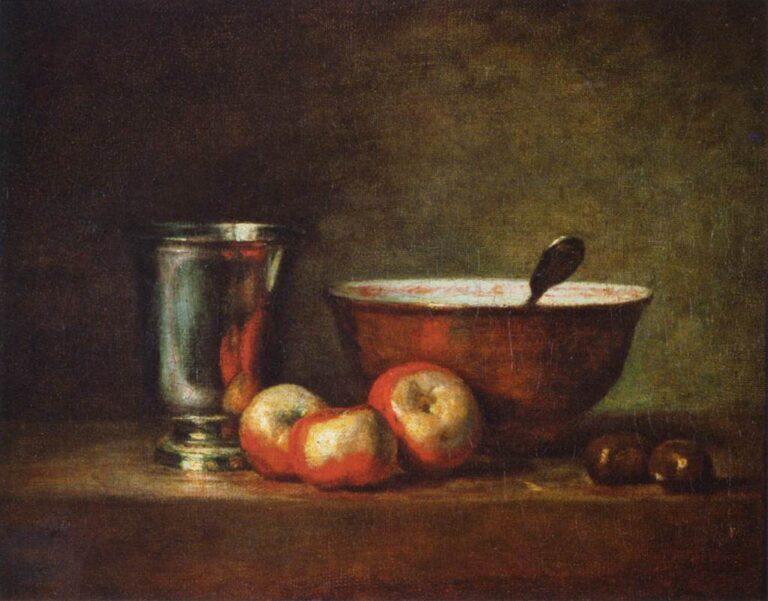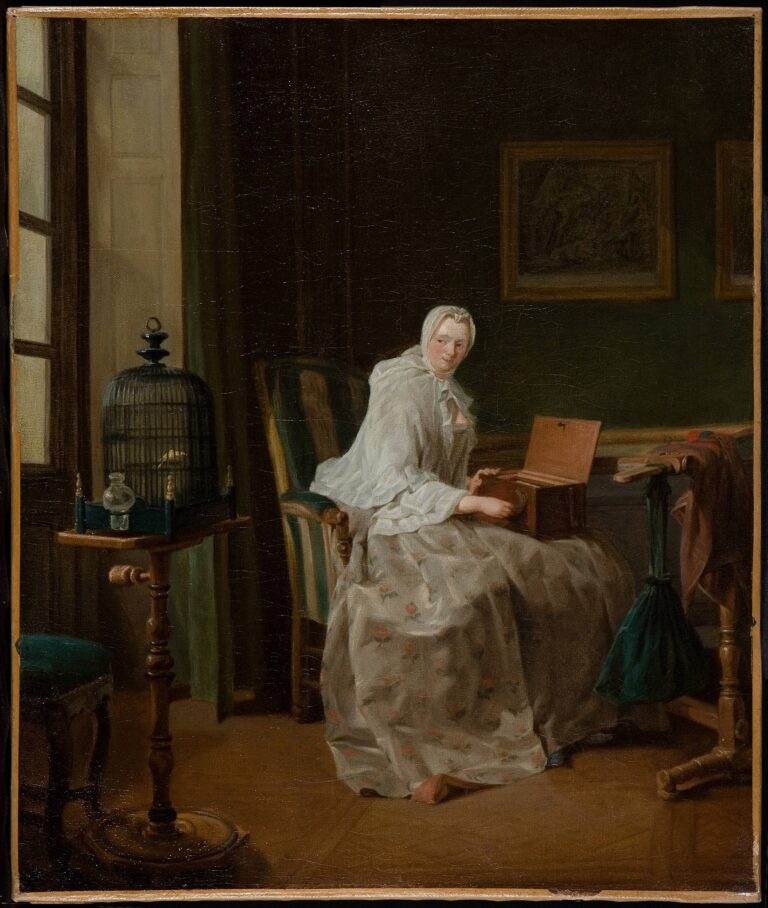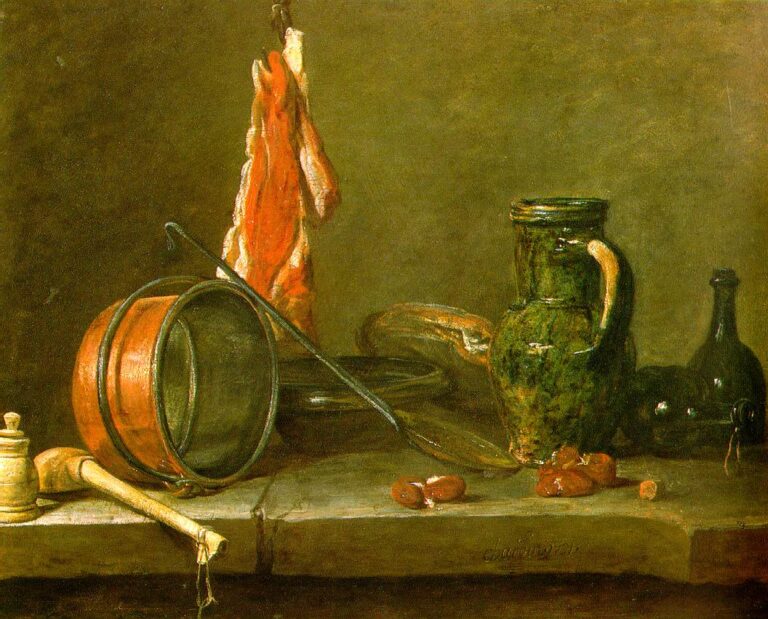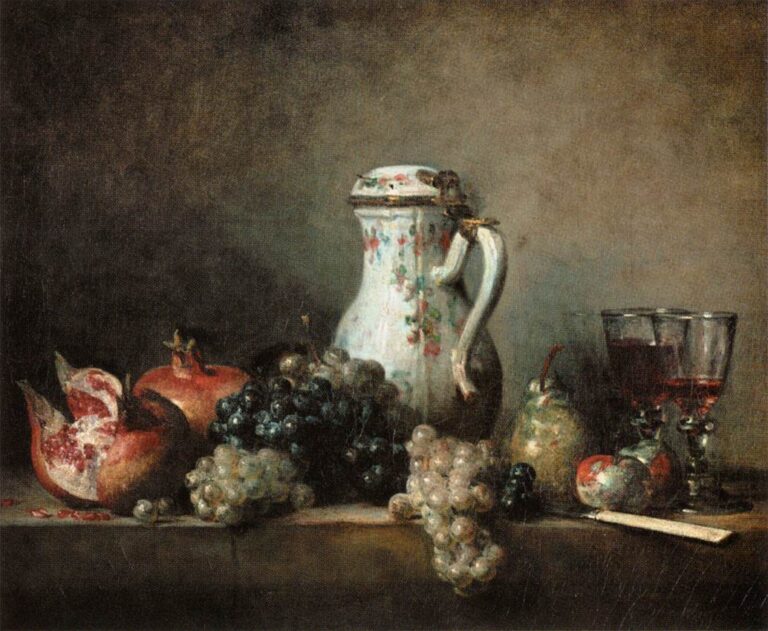Jean Chardin
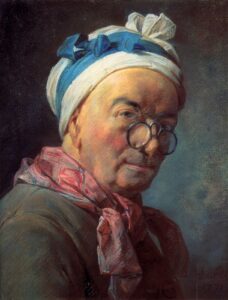
Jean-Baptiste-Siméon Chardin (1699–1779) was a preeminent French artist of the 18th century. Renowned for his subtle, intimate genre scenes and still life paintings, Chardin’s mastery of light, color, and texture has positioned him as a significant figure in the history of European art. Born in Paris, he developed his craft as a member of the Académie Royale de Peinture et de Sculpture and was admitted as a master in 1728.
Chardin’s work often depicted simple household objects, fruit, and game, breathing life into these commonplace items with an extraordinary sense of realism and tactility. In the 1730s, he turned his eye to genre scenes, capturing domestic life with an uncanny sensitivity. His works like “The Kitchen Maid” and “The Governess” are imbued with an unassuming dignity and honesty, revealing the beauty in ordinary life.
Chardin’s influence on art was profound and enduring. His style diverged from the grand historical and mythological themes favored by his contemporaries, and he is considered a forerunner to Realism. Chardin’s work resonates with viewers even today for its quietude, humanity, and humility. His detailed observation and exceptional ability to evoke the material quality of his subjects are revered by art historians and enthusiasts alike, earning him a celebrated place in the annals of fine art.
- 1
- 2

